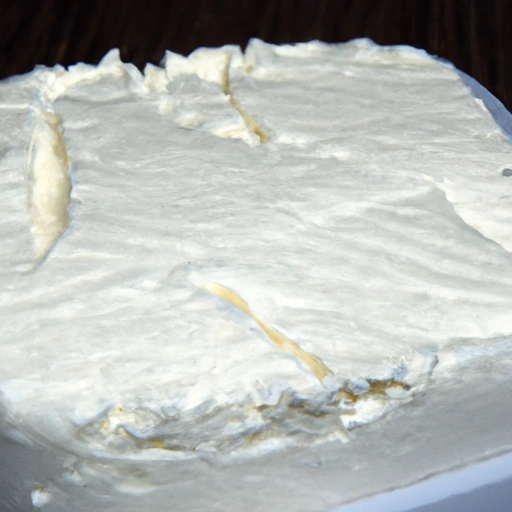Cream Cheese
Description

Cream cheese is a soft, mild-tasting fresh cheese made from milk and cream. Known for its smooth, spreadable texture and slightly tangy flavor, it is a versatile ingredient that can enhance the taste and texture of various dishes. Cream cheese is often sold in blocks or tubs and is commonly used at room temperature to ensure its spreadability. In recipes, the quantities of cream cheese can be measured in ounces (oz), grams (g), tablespoons (Tbsp), or cups (c), catering to both American and European cooking standards.
Common uses
Cream cheese is frequently used as a spread for bagels, bread, and crackers. It serves as a base for dips and is a key ingredient in frostings for cakes and cupcakes. Additionally, cream cheese is commonly incorporated into fillings for pastries, such as cheesecake and Danish pastries, as well as savory dishes like stuffed chicken breasts and casseroles.
Nutritional value
Calories
Typically, one ounce (28g) of cream cheese contains approximately 99 calories.
Protein
One ounce (28g) provides about 2 grams of protein.
Fat
Cream cheese is high in fats, with 10 grams per ounce (28g), out of which 5 to 6 grams are saturated fats.
Carbohydrates
It contains roughly 1 gram of carbohydrates per ounce (28g).
Vitamins
Cream cheese contains small amounts of vitamin A and traces of vitamins B2 (riboflavin) and B12.
Minerals
It contains a range of minerals such as calcium, phosphorus, and a small amount of zinc.
Health benefits
While cream cheese is not typically known for its health benefits, it does provide some nutritional value, such as protein and calcium, which are important for bone health. The presence of vitamin A also contributes to maintaining good vision and a healthy immune system.
Potential risks
Due to its high saturated fat content, excessive consumption of cream cheese may pose health risks, such as increased cholesterol levels and a higher risk of heart disease. Individuals with lactose intolerance or dairy allergies should also avoid cream cheese.
Common recipes
Cream cheese is a key component in cheesecake recipes, frosting for red velvet and carrot cakes, and creamy spreads for bagels and sandwiches. It can also be found in appetizers like jalapeño poppers and crab rangoon.
Cooking methods
It can be used as is, whipped, or baked into recipes. Cream cheese melts well under heat, making it suitable for sauces and fillings.
Pairing with other ingredients
Cream cheese pairs well with fresh herbs, fruits like strawberries and blueberries, smoked salmon, and various spices and flavorings such as vanilla and garlic.
Summary
Cream cheese is a widely popular cheese with a rich history and diverse culinary applications. While it offers some nutritional benefits, moderation is key due to its high saturated fat content. Its creamy texture and mild taste make it a beloved ingredient in many recipes, from sweet to savory.